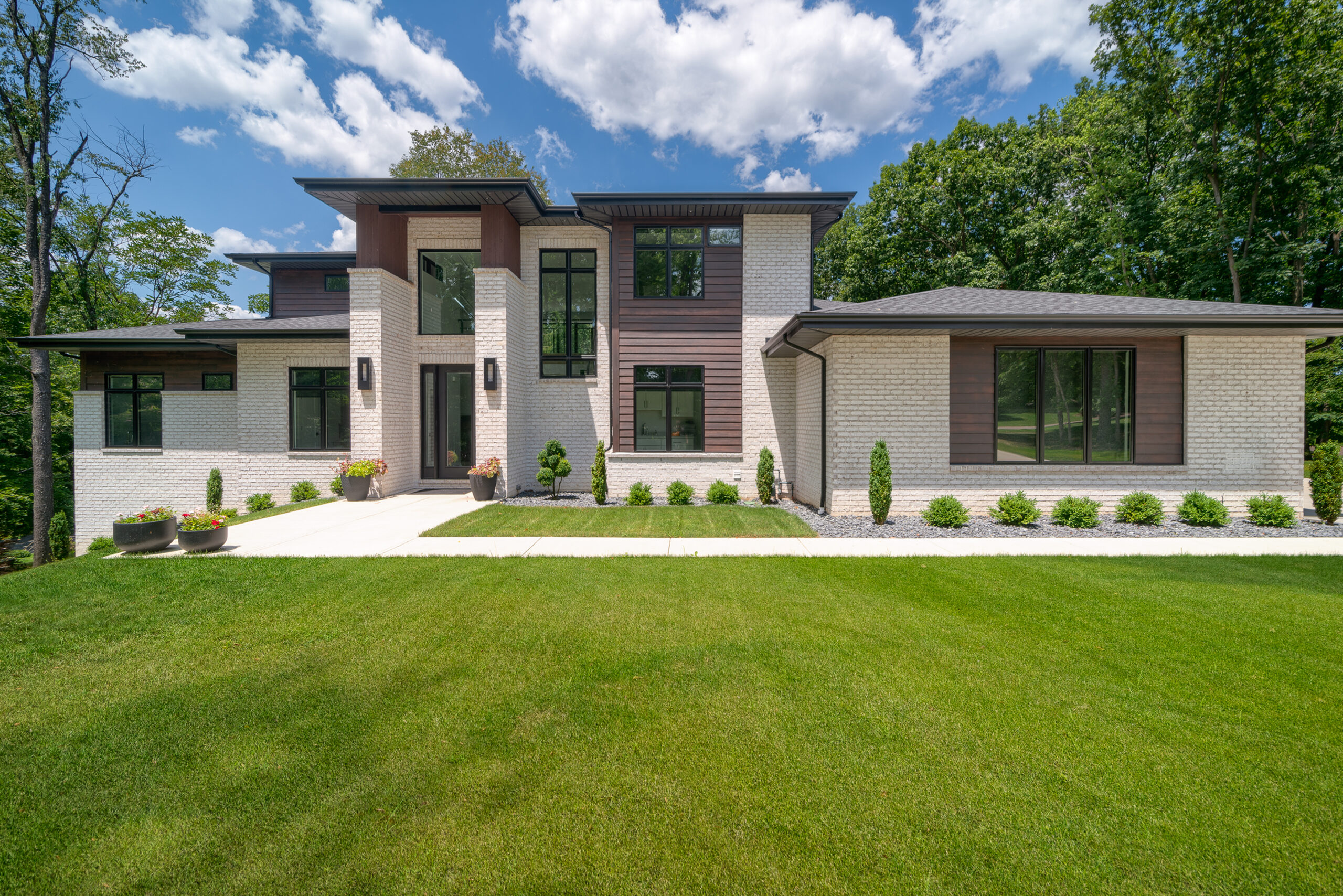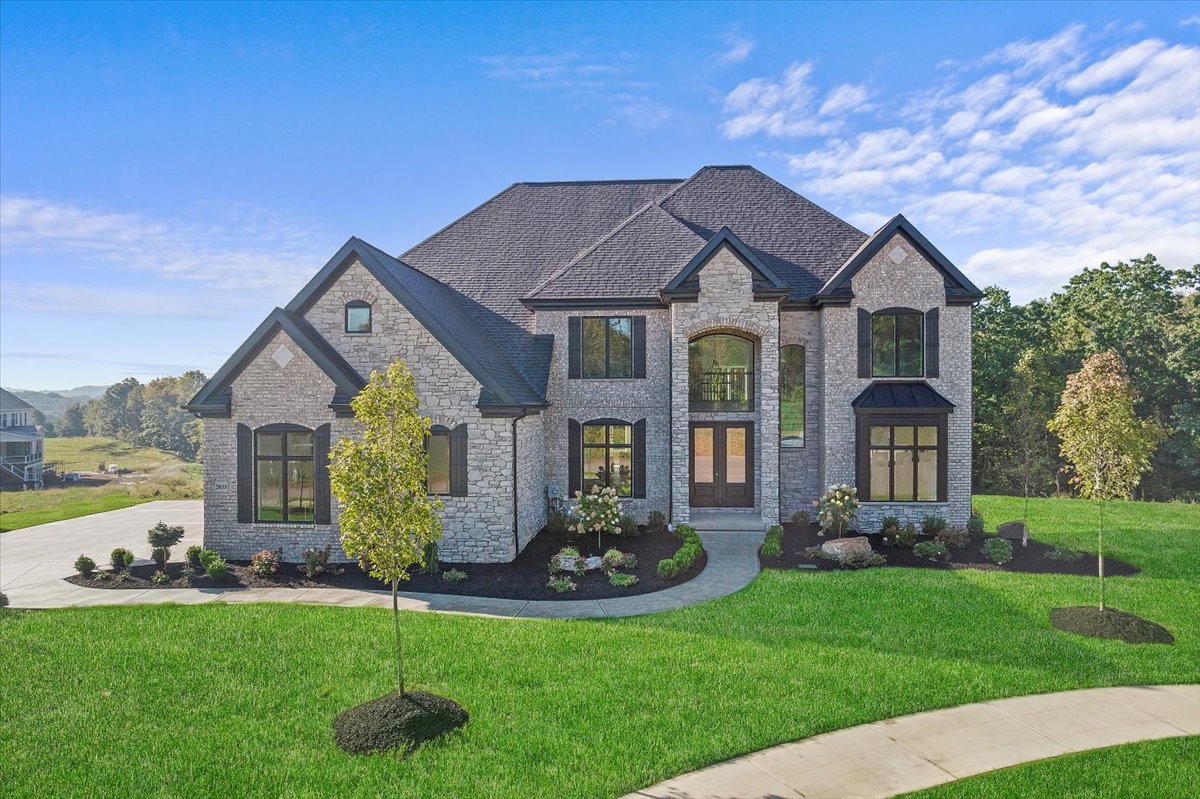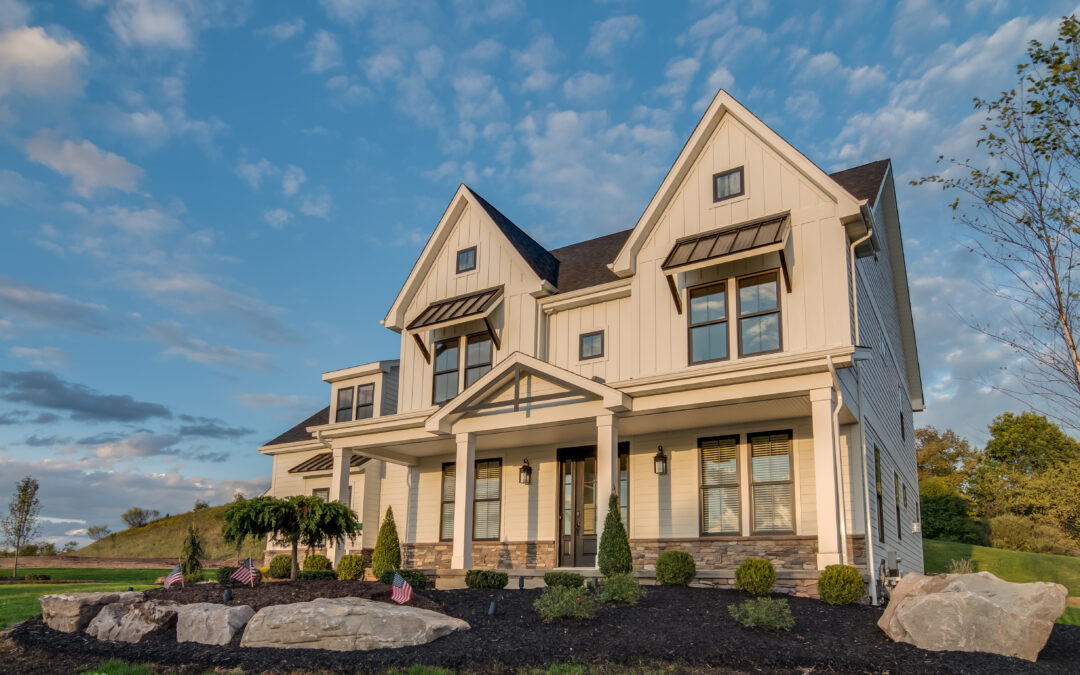New Single-Family Home Builds
Despite the current economic environment, by several accounts, new construction outlooks paint a more positive picture. More specifically, sources are cautiously optimistic that new single-family home builds may gain traction, which began in mid-2023 into 2024 and beyond.
The Farnsworth Group, a market research firm with industry expertise in building and construction noted that “the first half of 2023 has seen building confidence increase and return to a slightly positive sentiment. As of June 2023, builder confidence is at 55 out of 100, compared to a recent low of 31 in December 2022. Further, despite a temporary dip in single family housing starts during the first half of 2023, the outlook for the remainder of 2023 and into 2024 remains positive as forecasted by the National Association of Realtors (“2024 and 2025 Outlook for New Single Family Residential Construction”, www.farnsworthgroup.com/blog, February 2024). The blog continued by citing data from the U.S. Census Bureau and HUD stating that 1,491,000 building permits were issued in May 2023 with 897,000 for single family residential construction, up 4.8 percent from April 2023, but down 13.2 percent from May 2022, with permitting as a leading indicator “to understand the supply of new homes that will be available in the next eight to 12 months. As of April 2023, the U.S. Census Bureau estimates that:
- 83,000 new single-family houses were sold
- 155,000 were permitted, but not started
- 266,000 under construction
- 262,000 were completed
Total permits and starts were forecasted to increase each quarter as we head into 2024. The National Association of Realtors forecast hit 1,020,000 single family residential starts by the second quarter of 2024.” An article titled “What Market Conditions Should Home Builders Expect Into 2024” by Gillian Levington, Builder magazine (December 8, 2023) described the housing market as “a ‘tale of two markets’ with the new home building market defying the odds against rising interest rates, inflation and supply chain woes” challenging the country’s resale market given the reluctance of owners to sell their current homes. “The tale of two markets is expected to carry into 2024, with the new home market outperforming the resale market,” said Ali Wolf, chief economist for Zonda, a media company providing data and publications relating to commercial property and home construction in North America. She continued, however, that demand may not be as strong as in 2023 for either resale or new construction. “Builders will still have the advantage, but price cuts or increased use of incentives will likely be needed given the affordability backdrop.” Affordability, she noted, regardless of home type, will continue to be a challenge into 2024. With inflation as a lingering financial dark cloud, many buyers may put off that new home purchase and Wolf saw that in 2023, it was expected that the housing market would be slower, similar to the end of 2022. “That, however, proved to be too negative of a forecast, especially for the new home market. The way we have to think about 2023 is [indeed] a tale of two housing markets,” she said. The resale market spent the year in gridlock as many existing homeowners were reluctant to sell their homes. Low housing affordability and tight supply kept a lid on resale activity … in the new home market, builders had a much better than expected year. In fact, one could characterize sales in the new home market as ‘good’ through the first half of the year (2023). Contrary to the resale market, builders had homes to sell and could work with buyers on housing affordability by offering incentives,” Wolf explained.

In a February 27, 2024 article published as a summary of the National Association of Home Builders (NAHB) International Builders’ Show, Las Vegas, Ali Wolf was tapped to share further insight into single family market builds. “Eighty percent of builders anticipate starting more homes this year and more than half (51 percent) expect that starts will be up more than 10 percent compared to 2023.” Speaking to the issue of new buyers’ wants and demands, Wolf reported that more than 40 percent cited avoiding renovation or other problems as their top reason for purchasing a new build followed by lack of previously owned home inventory and the ability to choose and customize design (both at 25 percent), while energy efficiency and smart homes features (10 percent and 5 percent respectively) brought up the rear. As with other economists at the show, NAHB Chief Economist Robert Deitz believes that the Federal Reserve is making progress toward reducing interest rates. “While the Fed’s fight against inflation is building progress, the lingering inflation challenge is housing inflation,” he said. “Shelter inflation — rent and home ownership costs — are still rising at a 5.4 percent rate and, for the past year, more than half of the overall inflation in the economy has been shelter inflation. The only way to tame shelter inflation, and get overall inflation lower, is to build more housing.” The NAHB is predicting two or three Fed rate cuts of 25 basic points in the second half of 2024 but “with economic data stronger than expected at the start of the year, mortgage rates increased from about 6.6 percent to 6.9 percent by the end of February per Freddie Mac, indicating that even with rates expected to moderate in the months ahead, it could be a bumpy path forward.” Dietz expressed that “by the end of the year, NAHB projects’ mortgage rates will be below 6.5 percent and by the end of 2025, we expect rates to be in the high 5 percent range. This is good news for builders, housing demand and housing affordability.” With moderating interest rates, single family home starts are forecast to increase 4.7 percent in 2024 and rise to an added 4.2 percent in 2025. But the article also cautions that with the expansion of single-family home starts comes growing supply side challenges such as higher prices and labor, lots and lumber shortages. Tara Lukasek, managing editor of Window+Door and sister publication Glass Magazine, points out that “Limited labor availability is expected to persist for the long term according to the U.S. Bureau of Labor Statistics. Her article, “The 2024 Forecast: Top TakeAways” (January 8, 2024), tells us that ongoing shortages and a continued increase in people leaving the industry could result in a slower, overall growth rate in the construction labor force. “The number of people hired has been tailing off. You might think that indicates a declining demand for workers, but I think it indicates how hard it is to find workers to fill those positions,” said Ken Simonson, chief economist, Associated General Contractors of America. “The unemployment rate in construction has come all the way down to the same level as the overall economy, to 4 percent or less, and that’s really exceptional.” According to the article, there is more positive news. Supply chains improved in 2023, with the Global Supply Chain Pressure Index reaching an historic low in October 2023 and “almost all material divisions seeing stable or improving lead times, showing that supply disruptions are in the rear-view mirror, for now, according to real estate and investment management JLL Capital Markets.”



From a regional perspective, builders in Southwestern Pennsylvania have not been immune from the ravages of inflation, ballooning mortgage rates and supply chain challenges but have also seen some relief. Suncrest Homes Inc., a prominent, luxury custom builder headquartered in Murrysville, Westmoreland County, anticipates the launch of its newest build called Heritage Heights, Wilkins Township, in eastern Allegheny County. Further, with home sites available in their four other Westmoreland County communities, Suncrest is receiving numerous calls and inquiries for building both single family and carriage homes in their Apollo, Level Green, Murrysville and Trafford builds. “Prospects have declined over the past nine to 10 months,” explained Colleen Ruefle-Haley, Suncrest Homes vice president and a second generation builder. “We have not experienced this bad of a decline since the housing recession of 2008.” She added that current interest rates were just not low enough to convince clients whose current mortgage rates were in the 2 to 3 percent range to build. “We can suggest an ARM (adjustable rate mortgage) to a buyer, but we have found most clients are leery because they don’t fully understand how it works.” At the start of the pandemic, Suncrest grew very busy and had a backlog of homes and remodeling projects lasting from 2020 through 2023. “During that time period, clients were waiting months for us to start their new home or renovation project,” Ruefle-Haley added. Similarly, looking at creative ways to allay some fears about higher mortgage rates proved interesting for Jeff Costa, Costa Homebuilders, a fourth-generation builder of premiere custom and luxury homes, based in Elizabeth, Pennsylvania. “Banks are recommending a five to seven year ARM rate, which can be lower than the normal 30-year rate of about 7 percent,” he said. “Many believe that after the ARM rate is done, the mortgage rate will have gone down, but it can be somewhat of a gamble.” He quipped, however, that one might abide by his grandfather’s adage — Marry the house, date the rate — and then you can refinance the mortgage. He added that a percentage of his clients are making a high down payment to reduce the overall mortgage. Costa also reported that in 2023, as the rates were climbing, he noticed business beginning to freeze. Normally, it is slow between Thanksgiving and Christmas, but in 2024, he also noticed that as rates began to decline, he became extremely busy, particularly into January 2024. As the rates crept upward in February, a slowdown ensued. Building high end homes across the region, Costa found that those who were ready to make a move, moved, and as rates dropped a bit, it created a back log peaking currrently. With Costa luxury homes ranging from $1.2 to $4 million, buyers have been requesting first floor owner suites, double offices, indoor basketball courts and even indoor golf simulators. “We develop the floor plan and the customer fills it in,” he noted. “Many take inspiration from photos and as we work with them, we help them get exactly what they want.” And oftentimes, what they want are larger lots in the suburbs and beyond in areas such as Penn Township, Murrysville and others. Pittsburgh based Phillip Wentzel Custom Homes, a family owned and operated business founded in 1910, serves the Pittsburgh metro area with most of its work currently in the Fox Chapel area. According to Dante Fusaro, the firm’s vice president and director, residential, the builder has not seen an impact with the rising mortgage rates. “Our clients that do use financing are split between traditional construction loans and creative measures with their own financial team,” he said. He asserted that while demand has been steady over the last few years, because of Pittsburgh’s dense population, land availability has been a determining factor in the decision to build. “Due to this factor, we find many of our clients either opt for an extensive renovation of an existing home or tearing down an older home to build a new one,” Fusaro added. “This is seen in most neighborhoods surrounding Pittsburgh proper.” With the good fortune of not postponing projects because of the pandemic and supply chain issues, Phillip Wentzel’s backlog is strong into 2025. “Some of this is attributed to homeowners realizing now is as good a time as any to build and we expect that trend to continue.” Ron Heurich, president, Heurich Homes, a luxury custom home builder headquartered in Wexford, believes that the days of postponing “almost everything” because of the pandemic are over and new home builds are in the planning stages. “The early autumn of 2023 was much slower than average,” he reported. “At the very end of 2023 and moving into 2024, we have seen a spike in activity from new home buyers who are keeping us busy.” He offered that many are viewing the existing speculative models that are quick move-ins such as those found at their latest build called Mallard Pond, Marshall Township. Here, single family homes in their Phase 3 home/lot packages start at $1.6 million with lots typically boasting a 120-foot frontage backing into heavily wooded, mature open space. “Also, others have been viewing and reserving a build-ready lot, allowing us to begin the design of their truly custom home.” Stating that customers relocating to Pittsburgh, particularly those in the medical, professional, collegiate sports and tech industries often benefit Heurich Home builds, particularly given that, at the end of the year, relocations are often decided. “Buyers are quick to begin their search for a new home. Specifically, the new and expanding medical facilities in the North Hills area brought interest from relocators as well as move-up buyers. Medical professionals not only want to work here, they also want to live here.” He believes that high quality schools, fitness and sports facilities, clubs and dining along with access to major road arteries have appealed to a variety of buyers. Noting, however, that national home sales in the $600,000 to $1 million range have been negatively affected by interest rate hikes and caused a slowdown, he added that “Homes of $1 million and more have been selling at a steady pace despite the rate hikes in Pittsburgh. The high-end luxury home market that Heurich Homes is delivering to has a thought process of ‘refinanace when rates drop.’”



hroughout the pandemic years, supply chain concerns rooted themselves in many industries, with construction certainly not spared. While many have pointed to the increased demand for skilled workers as well as product acquisition, in post pandemic some are seeing labor/product issues ease as 2024 progresses. Fusaro has seen product availability issues recede but acknowledges that certain industries still show signs of volatility that make pricing a challenge. “Our residential construction staff is strong and stable but as demand continues to rise for high end construction, our labor force on the subcontractor level continues to be stretched thin, causing strains on schedules,” he reported. Colleen Ruefle-Haley concurs that supply chain challenges have eased up. “Pricing, on the other hand, is high and there does not seem to be an end in sight,” she commented. “We are exploring different products to help ease the pricing pain.” Jeff Costa, too, has noted a big difference in supply issues that arose during the pandemic. Observing that those who remodeled during the pandemic using products such as windows and garage doors, for example, placed a strain on supply, “but that has ended in the last several months,” he said. “It took a long time to catch up. Now, there are much fewer supply chain and labor issues but prices for goods aren’t coming down.” He added that some prices may come down or rise but the Pittsburgh market is fairly stable. With supply chain issues causing hesitation throughout the pandemic, Heurich sees those days as over. “The supply chain issues caused a reluctance at first because essential components needed to build and allow occupancy were sometimes nearly impossible to obtain,” he added. “And, if they were able to be had, the price would be very difficult to justify. We are not experiencing delays in obtaining building materials. With the supply chain back to normal, we see commodities such as lumber pricing reflecting normal pricing fluctuations. This is helpful in making housing more affordable.” He does note that certain components may never decrease in price citing windows as a perfect example. “Even though our windows are made with wood, the drop in lumber prices never lowers the price we pay for windows.” In light of fluctuations, “I do not see a backlog of new homes to be built.”
The discussion about home mortgage interest rates and inflation continues. Many believe that home affordability has regained favor while others project a mild recession ahead, but unlike that of 2008/2009. Housing inventory, too, remains a challenge with the interest in new builds helping. Considering a more positive view, Richard Branch, chief economist for Dodge Construction Network, as cited in Lukasik’s article “The 2024 Forecast: Top Takeaways” tells us “We’re anticipating that 2024 will bring about more consistent growth, as well as more opportunity in the construction sector … but the economy will remain challenged at least over the next three to six months [of 2024]. Still, we’re remaining confident that the U.S. economy will remain recession-free.” NH


